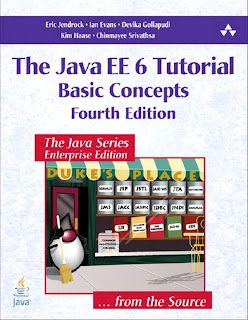Writer
- Eric Jendrock,
- Ian Evans,
- Devika Gollapudi,
- Kim Haase
- Chinmayee Srivathsa
Published Year: 2010
Publisher: Pearson Education, Inc.
ISBN-13: 978-013-708185-1
ISBN-10: 0-137-08185-5
Size: 7 MB
Page: 588 Pages
Developers today increasingly recognize the need for distributed, transactional, and
portable applications that leverage the speed, security, and reliability of server-side technology. Enterprise applications provide the business logic for an enterprise. They are centrally managed and often interact with other enterprise software. In the world of information technology, enterprise applications must be designed, built, and produced for less money, with greater speed, and with fewer resources.
With the Java Platform, Enterprise Edition (Java EE), development of Java enterprise
applications has never been easier or faster. The aim of the Java EE platform is to provide developers with a powerful set of APIs while shortening development time,
reducing application complexity, and improving application performance.
The Java EE platform is developed through the Java Community Process (the JCP), which is responsible for all Java technologies. Expert groups, composed of interested parties, have created Java Specification Requests (JSRs) to define the various Java EE technologies. The work of the Java Community under the JCP program helps to ensure Java technology’s standard of stability and cross-platform compatibility.
The Java EE platform uses a simplified programming model. XML deployment descriptors are optional. Instead, a developer can simply enter the information as an annotation directly into a Java source file, and the Java EE server will configure the component at deployment and runtime. These annotations are generally used to embed in a program data that would otherwise be furnished in a deployment
descriptor. With annotations, you put the specification information in your code next to the program element affected.
In the Java EE platform, dependency injection can be applied to all resources that a
component needs, effectively hiding the creation and lookup of resources from
application code. Dependency injection can be used in EJB containers, web containers, and application clients. Dependency injection allows the Java EE container to automatically insert references to other required components or resources, using annotations.


No comments:
Post a Comment